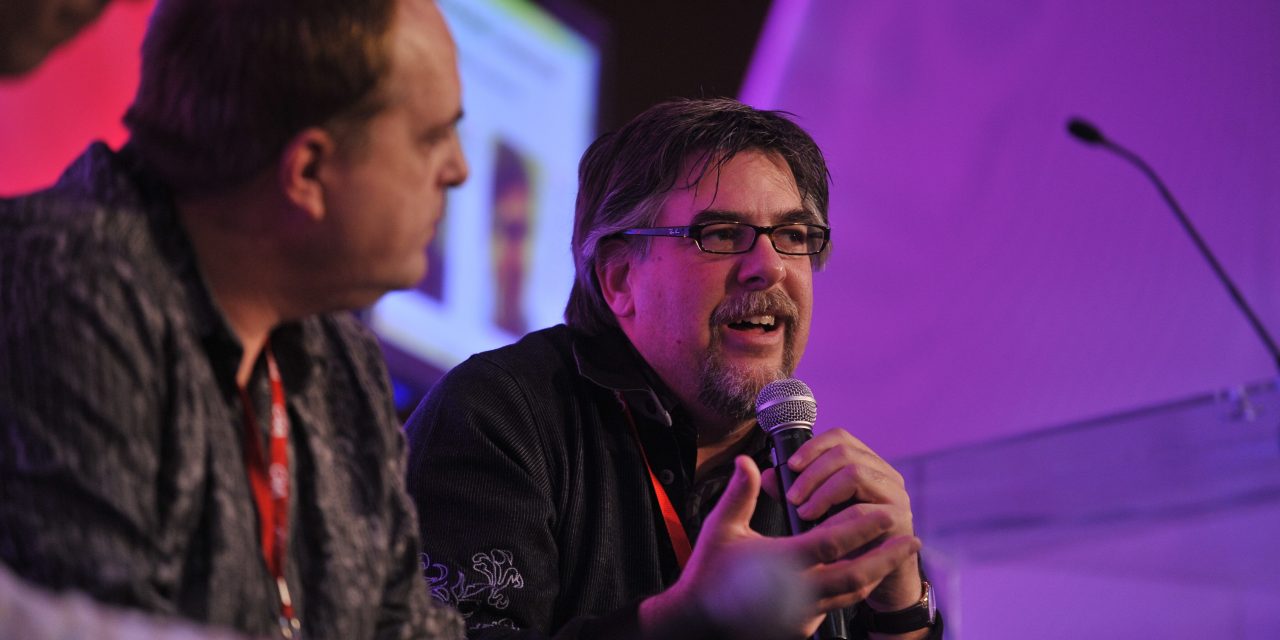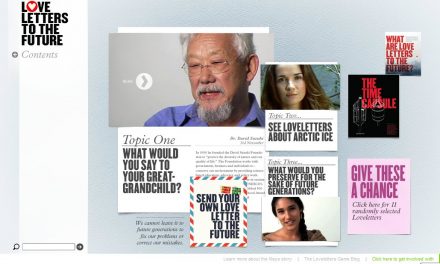For this weeks interview about “Why Transmedia?” we spoke to Experience Designer Steve Peters.
Steve Peters is well known to the world of Alternate Reality Entertainment. He is the founder of the Website Alternate Reality Gaming Network (ARGN) – the number one info source for what is going on in the world of Alternate Reality Games. He is a Senior Designer at Fourth Wall Studios, a frequent speaker/lecturer about Transmedia Storytelling and a founding partner of No Mimes Media. Together with J. C. Hutchins he is also running a podcast which was formerly known as the ARGNet-Cast. It was renamed to the Story forward Podcast at the beginning of this year. Tune in there or follow Steve’s ideas, sharings and inspirations on twitter, but read his answers to our questions here on our website first 😉
As an Experience Designer – why transmedia?
First off, since there’s a lot of confusion about the term “transmedia” itself, let me be clear what I mean when I use it: To me, transmedia storytelling is the technique of telling stories across multiple platforms and formats using current digital technologies. It is not to be confused with traditional cross-platform media franchises, sequels or adaptations, as it’s all about telling one story where all the story parts are linked together and in sync with each other, even though they may be in different places.
So, with that in mind, I want to tell stories and entertain using all the new digital tools that we have at our fingertips. I’m trying to figure out what entertainment looks like now that it’s not limited to one platform (screen, page, whatever), and find the form where it will work and resonate and make sense to an audience. Also, be accessible in the same way that books are, so that people like my mom can understand and enjoy it. 🙂 It’s the most exciting new form of art out there, as far as I’m concerned. I was a working musician for decades, and this stuff is far more gratifying to me as an artist than any of my previous work.
What’s driving the sudden activity and buzz around “transmedia”?
In all honesty, I think most of the buzz around the term is based on an inaccurate definition of exactly what it is. Most of the folks I talk to have the impression that it’s all about coordinating a story world across platforms: film, TV, web, illustrated novels, books, etc. But to me, this is nothing new, it’s just a new word for something pretty old, something we’ve always called franchising. Now, don’t get me wrong, I have nothing against story franchisers and the work they’re doing (there are a lot of very talented and creative people doing amazing work), but it’s just not the same thing as the types of projects I work on. In the case of the former, the buzz comes from the excitement of something new that is in fact not new at all, while the latter is about a truly new way to entertain that wasn’t possible even a decade ago.
Can you think of any examples of content, either mainstream or niche, that are great case studies for how things should play out?
Well, we all love Alternate Reality Games. To me, they’re an obvious subset of Transmedia storytelling, whether they’re mainstream like Majestic, Lost or Why So Serious, or more niche like the countless excellent grassroots games over the years.
A current great example, to me, is the BBC series Sherlock, which had transmedia story content that was synchronized in real time with the episodes as they aired. Blogs, websites and more did a great job of fleshing out characters, and the content even referenced itself in the series: The websites referred to stuff you’d see on screen, but even cooler, the stuff you’d see on screen would reference the digital content too. It was two-way synchronous content, which was great! Made you feel like Sherlock and Watson were really living and working in the same world we live in.
Also, I was really compelled by Thomas Dolby’s project to accompany his new album The Map of the Floating City. He used an online multiplayer game that extended the world of the album in an amazing way, and I put it right up there with Nine Inch Nails’ Year Zero, even though it was admittedly pretty different. 🙂
Then, of course, are the projects we’re working on at Fourth Wall Studios, the first of which is already live. One of the ways we’re exploring transmedia storytelling is through our RIDES platform, where the story comes at you via video, phone calls, text messages, email, and even your printer. You can currently see our first project at www.homeaghoststory.com, with more stuff soon to come. Keep an eye on www.fourthwallstudios.com for updates.
Do you think that only Hollywood and big networks are able to realize “cool” transmedia projects?
I think that U.S. TV networks face a lot of challenges to providing similar transmedia content in sync with their shows. Even something as simple as having varying time zones to deal with can complicate things, along with the fact that TV series don’t have purposefully limited runs like they do elsewhere. Then, from a business perspective, the studio machinery is so silo’d, in that the showrunners, digital content departments, digital marketing departments, writers, etc. rarely communicate. I was once in a meeting where we had every affected department head in the room to discuss a proposal, and most of them shook hands as they had never actually met in person! It’s tough to try truly innovative, coordinated projects when things are like this.
Cable networks like Showtime and HBO are able to do a better job, I think, as they seem more open to taken risks. They’re subscription-based, too, so they don’t have to worry as much about being too edgy or losing sponsors like the broadcast networks do. I’ve seen some great stuff from the cable networks and studios, but haven’t yet seen anything that feels like it’s really hit it, or is a game-changer. Not yet, anyway.
Plus, generally speaking, it’s really tough for the machinery of Hollywood to produce things that aren’t built by committee at this point. That in itself is a major obstacle to doing something cool.
What do you wish for upcoming transmedia projects?
I think that we’re still in a period where we’re waiting a little bit on a few more pieces to fall into place before things can really get going. Technology is changing how we do things in profound ways, but I think we still need to see some standardization of platforms and hardware to occur. Not sure what this looks like yet, but I have some hunches. Also, people’s spending habits are continuing to change and coalesce into something new from even just a few years ago. I mean, look what Apple has done with its App Store and micro-transactions.
If you look back, when the film camera was invented, film studios and movie theaters didn’t appear overnight. The technology and a certain amount of standardization (35mm? 16mm?) had to settle in, plus enough content had to begin to be produced to make movie theaters a viable business. It was a gap of over a decade. I think in many ways, we’re still in that gap with transmedia entertainment.
So, my wish is for all these pieces to appear and fall into place. In the meantime, we’ll continue to push forward, trying to find things a piece at a time. 🙂
What is the transmedia scene in California like?
Warm and sunny. And it never rains.
But seriously, there’s a TON of interest, especially by the entertainment industry, but they generally don’t have any idea what to do, yet. Webseries creators are sort of an Indie TV industry, if there’s a parallel, and there are a lot of great people trying new things. Plus, there’s a pretty active community of transmedia folks. I wouldn’t live anywhere else. Well, except maybe Berlin or Paris. 😉
[divider]
Thank you very much for taking the time and answering our questions, Steve. You are always welcome to Berlin and maybe, one fine day we will see you as a speaker at a Berlin based conference 😉
© aller Logos und Abbildungen bei den Rechteinhabern.
(All pictures, trademarks and logos are protected.)







Recent Comments